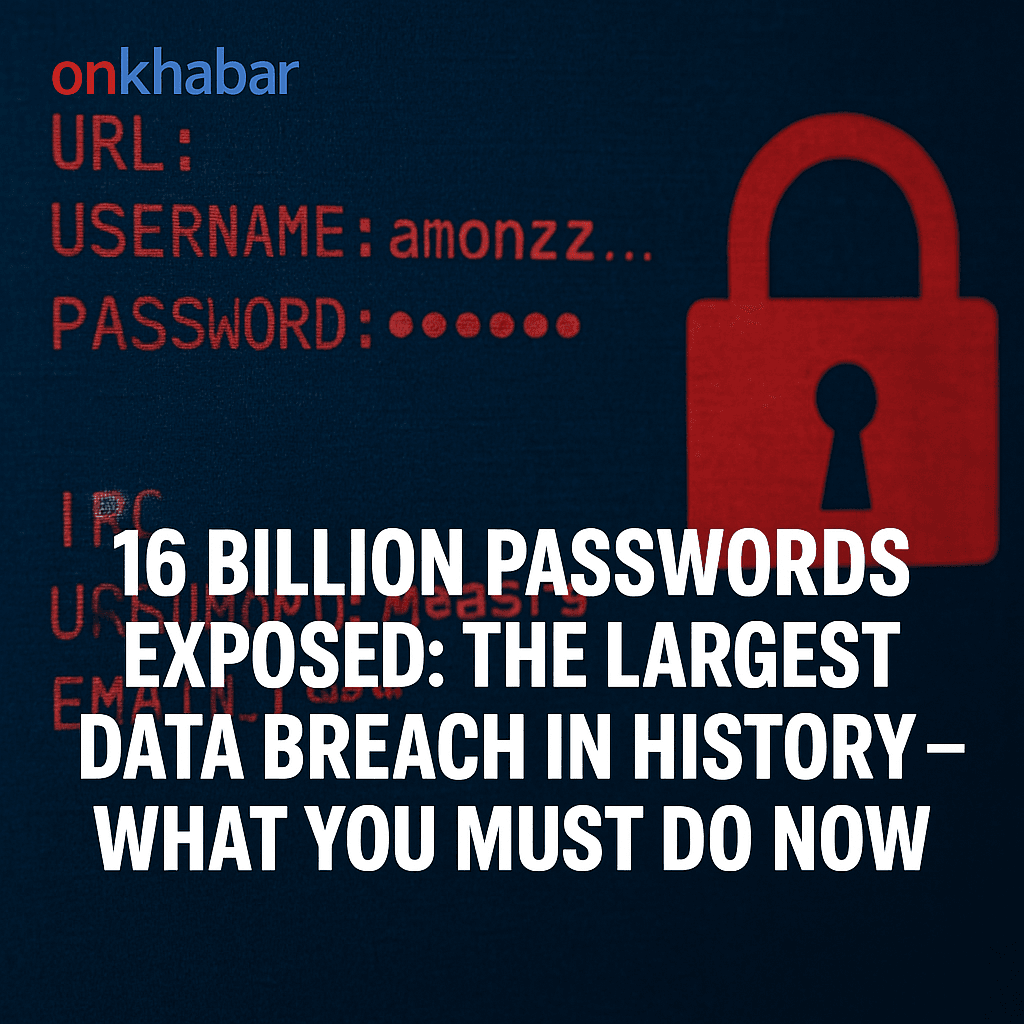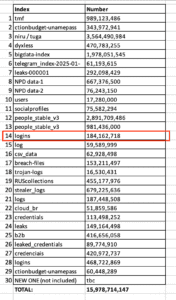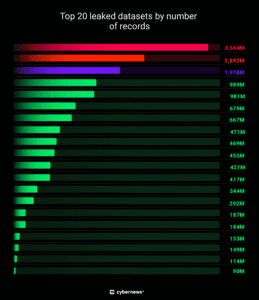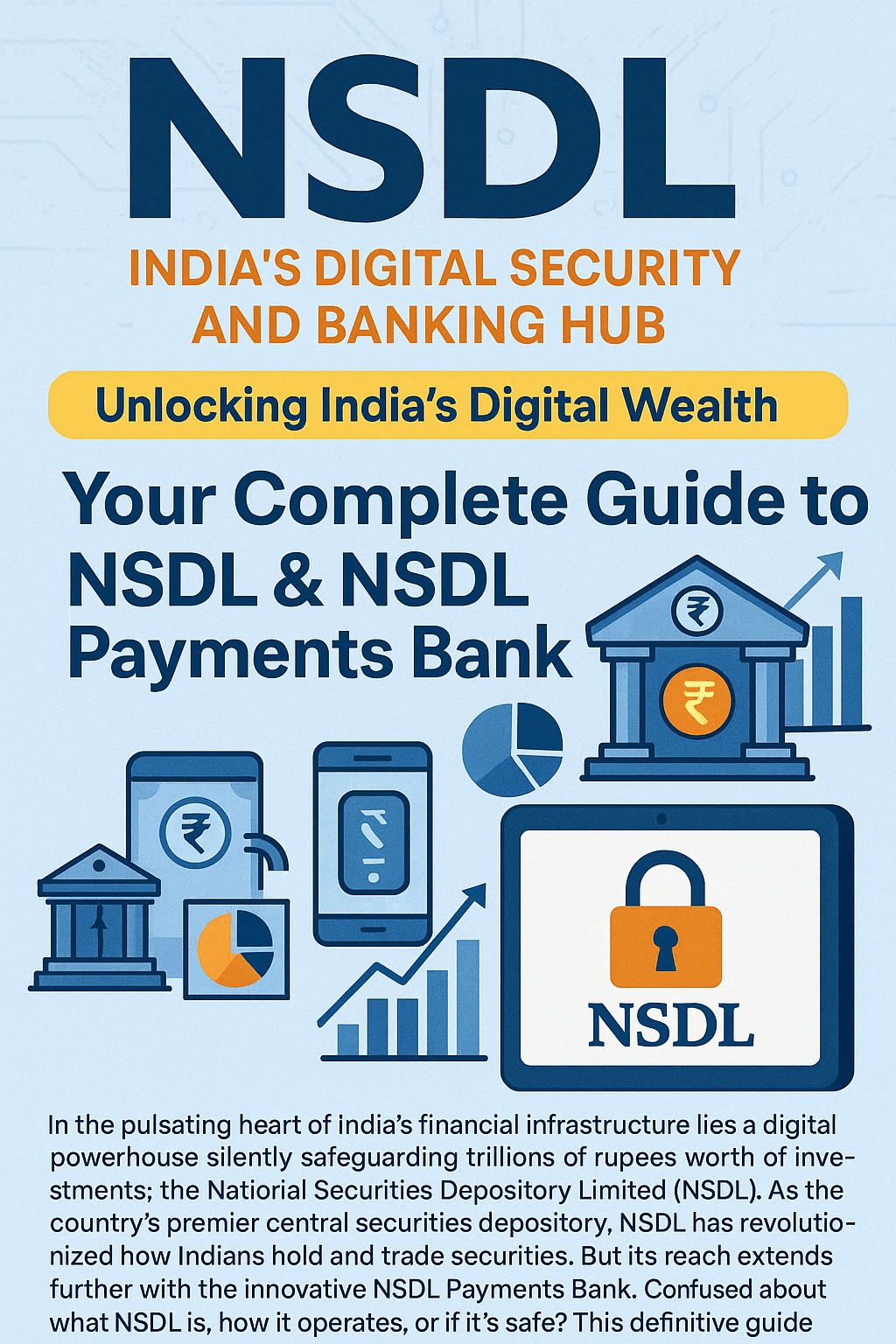
Imagine every person on Earth having two of their online accounts hacked. That’s the staggering scale of the 16 billion password leak – the largest data breach in history. Discovered by Cybernews researchers, this isn’t recycled spam from old breaches. It’s a fresh, weaponized treasure trove for cybercriminals, exposing logins for Facebook, Google, Apple, GitHub, government portals, and nearly every service you use.

The Unprecedented Scale of the Breach
This isn’t one hack—it’s 30 separate databases, totaling 16 billion records, with some holding up to 3.5 billion credentials. For perspective:
That’s 4x more than the global population.
The leak includes URLs, usernames, passwords, tokens, and cookies.
Data is RECENT, sourced from infostealer malware (malicious software that scrapes your device when infected).
Unlike centralized breaches (e.g., “Facebook got hacked”), this data comes from thousands of infected devices worldwide. Hackers compiled these records into poorly secured databases, briefly exposed online before researchers found them.

Why This Is Catastrophic
“This isn’t just a leak – it’s a blueprint for mass exploitation.”
– Cybernews Researchers
Cybercriminals now have a goldmine for:
Account takeovers: Hijacking your social media, email, or banking logins.
Targeted phishing: Sending hyper-personalized scams.
Bypassing 2FA: Tokens and cookies in the leak can circumvent two-factor authentication.
Identity theft: Fueling ransomware and financial fraud.
No service is safe: Facebook, Google, Apple, Telegram, Zoom, government sites—all are in the crosshairs.


Wait, Did Google or Facebook Get Hacked?
No—but your credentials for them are exposed. Here’s the nuance:
There was no breach at Google, Apple, or Facebook.
Instead, infostealers stole logins from individual devices while users accessed these services.
The leaked data includes login URLs (e.g., “facebook.com/login”), making your accounts vulnerable.
As researcher Bob Diachenko clarifies:
“Credentials we’ve seen in infostealer logs contained login URLs to Apple, Facebook, and Google.”
How Did This Happen?
Infostealer malware is the culprit. Once installed (via phishing emails, fake downloads, or compromised sites), it harvests everything:
Browser-saved passwords
Session cookies
Credit card details
Crypto wallet keys
Cybercriminals aggregated this data into massive databases, stored on unsecured Elasticsearch servers or cloud storage—leaving them briefly visible to anyone online.
The Disturbing Shift in Cybercrime
Cybernews researcher Aras Nazarovas warns this leak signals a major shift in hacking tactics:
“Cybercriminals are moving away from Telegram groups to centralized databases. This is more efficient for mass attacks.”
Every few weeks, new datasets emerge. The “mysterious database” of 184 million records reported in May? It’s just a drop in this 16-billion-record ocean.
Protect Yourself: 5 Critical Steps
Change Passwords NOW
Prioritize email, banking, and social media.
Use a password manager (like Bitwarden or 1Password) to generate and store strong, unique passwords. Reusing passwords? You’re a sitting duck.
Enable 2FA—But Go Further
Avoid SMS-based 2FA (hijackable). Use authenticator apps (Google Authenticator) or hardware keys.
Revoke old sessions: Tokens in the leak can bypass 2FA. Log out of unused devices via account settings.
Scan for Infostealers
Run malware scans with Malwarebytes or Norton.
Never download “cracks” or click suspicious email links.
Monitor Your Accounts
Use Have I Been Pwned to check breach exposure.
Set up bank/credit alerts for fraud.
Stay Skeptical of Phishing
Expect highly targeted scams (“Hi [Your Name], your Google login was blocked…”).
Verify requests directly via official apps or websites.
The outlet also says that “massive datasets” have been emerging every few weeks, though this is the first reporting of the hack. Cybernews does note that Wired reported in May about a “mysterious database” being exposed with 184 million records — a “trove of breached data” that included logins for Google, Meta, and Apple.
But 184 million is a lot less than 16 billion, which the outlet claims is the actual scope of the breach.
Tom’s Guide is running a live blog about the incident and notes several ways people can protect themselves from scammers, including enabling two-factor authentication (2FA), which makes it much more difficult for hackers to get into your accounts, and using a password manager to help keep your information secure.

The Bottom Line
This 16-billion-record leak is a wake-up call. Cyber hygiene isn’t optional—it’s survival. While companies must fortify defenses, your actions matter most. Use a password manager. Enable 2FA. Stay vigilant.
“A success rate of less than 1% can open doors to millions.”
– Cybernews
Don’t be one of them. Secure your digital life—today.









